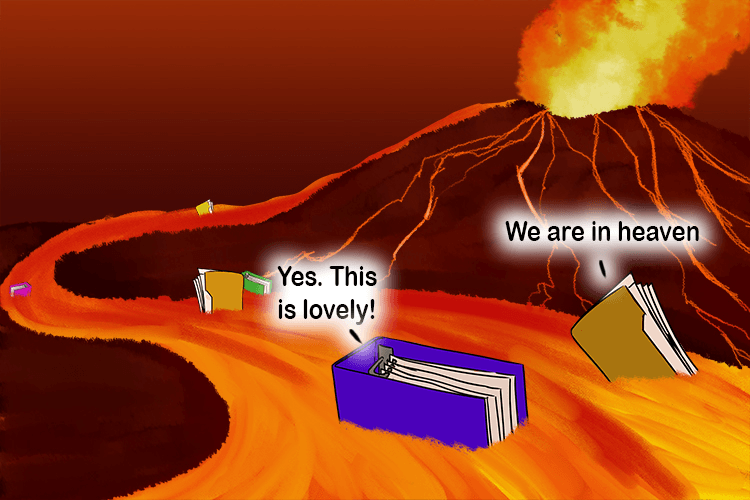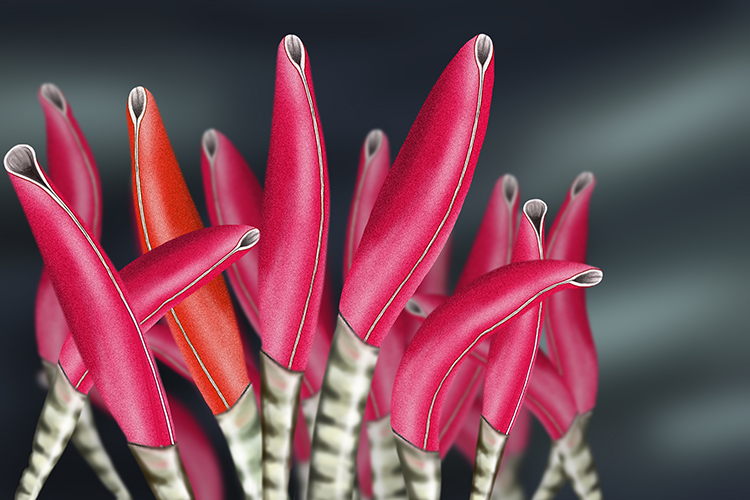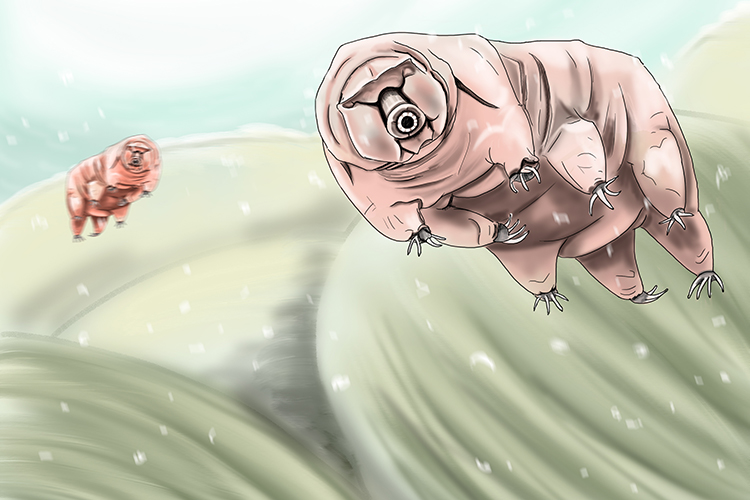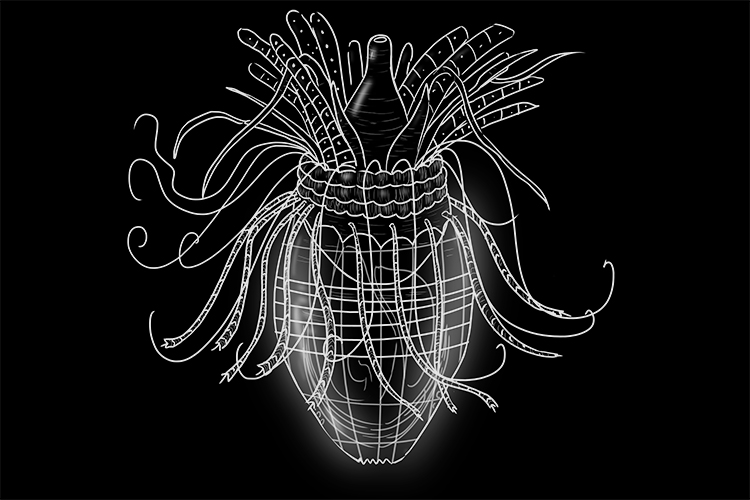Extremophiles – creatures living in extreme environments
Extremophiles are organisms adapted to live in environments with severe conditions that are well outside the capabilities of most, such as super-hot volcanic vents.

A stream of files (extremophiles) lived in volcanic lava (live in extreme environments).
Examples

Giant tube worms are extremophiles found at the base of the Pacific Ocean several miles underwater. They live at pressures that would crush most organisms. They have also evolved to tolerate the high levels of hydrogen sulphide that is pumped out of the hydrothermal vents around which they live.

Probably the best example of an extremophile is the tardigrade, often called the water bear. They are tiny (less than half a millimetre long) and can survive the most extreme conditions including going without food or water for 120 years! They can survive at temperatures from just above absolute zero to above the boiling point of water. They can also tolerate pressures six times that found on the ocean floor.

Loricifera are also tiny extremophile micro-organisms. They live around 3,000 metres below the surface of the Mediterranean Sea in the sediment. What makes them extremophiles is that they live their entire lives without light or oxygen. They don’t get their energy from mitochondria in their cells like other organisms.




